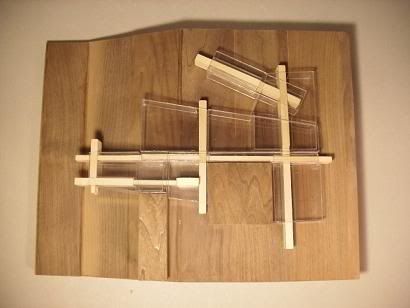Spacial Relationships and Circulation
Towards the beginning of the semester we spent a large amount of time discussing the relationships of different spacial configurations. For example, adjacent spaces or the poché, interlocking spaces, overlapping spaces, and spaces within spaces. I know. Architects love their words, and space is among the top five. I never thought it possible to hear it as much as I've heard it. We also looked at the circulation of the inhabitant and the visitor, primarily the latter, and how it reacts to space. Put simply, we talked a lot about public and private situations. We did several studies with different precedents of our choosing, then settled on one to develop diagrams and physical models. I landed on the Cape Schanck House by Jackson Clements Burrows. It's a really fun house, and worked well with this project.
A diagram series
Combined Spaces
Test renders (1)Spaces (2)Exploded


Physical Model
The walnut represents private or adjacent space and ground planes, and is fixed. The acrylic represents public interlocking space. The bass wood represents public circulation. The model was built in such a way that it can be disassembled only in the direction of the circulation, or the path of travel. In other words, where a person would enter the first space would be where the first piece of bass would be removed, thus unlocking the first acrylic piece, and so on and so forth. This one was a brain scrambler.





0 Comments:
Post a Comment
Subscribe to Post Comments [Atom]
<< Home